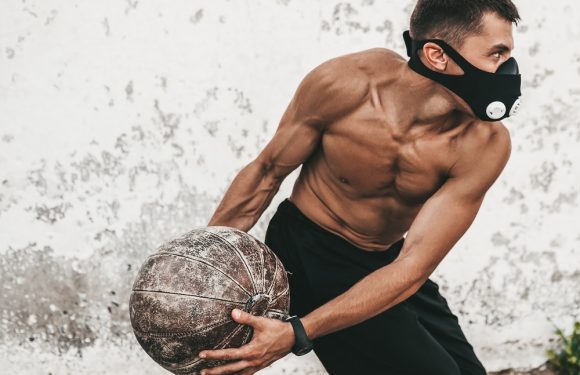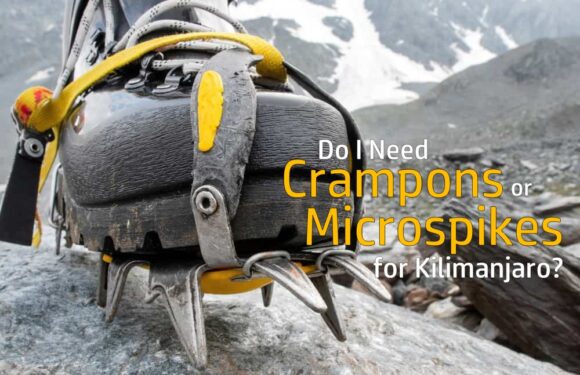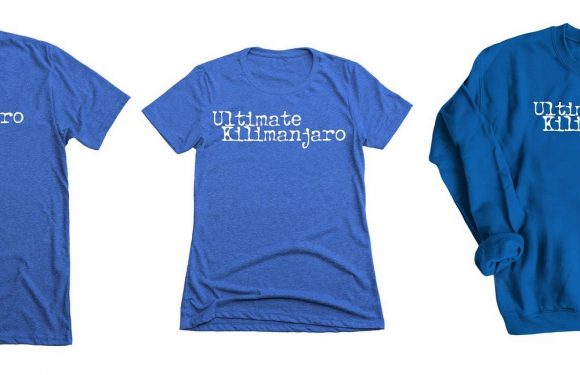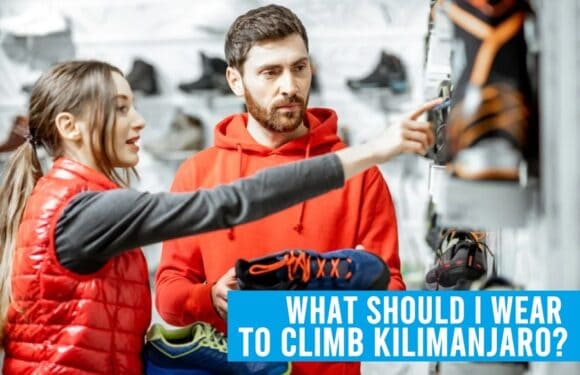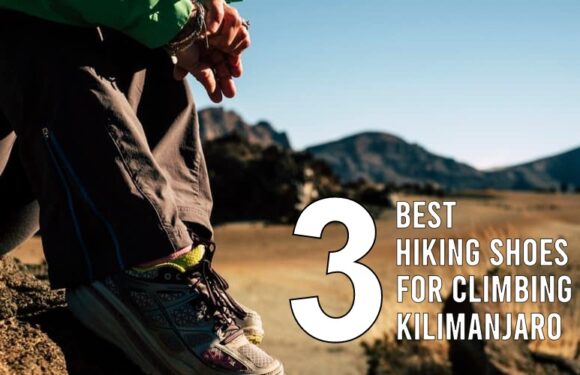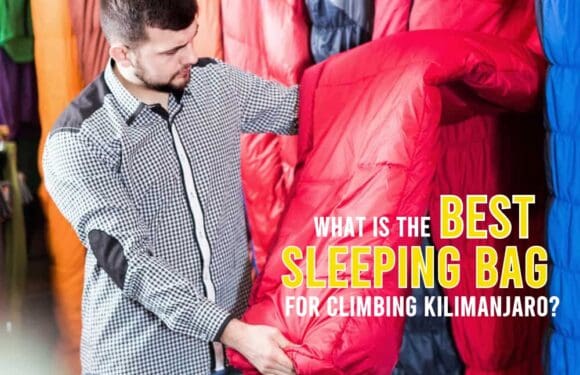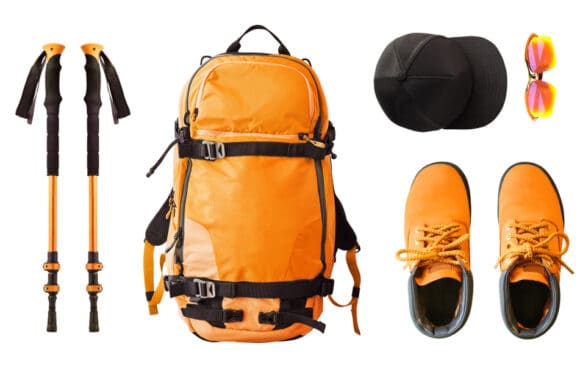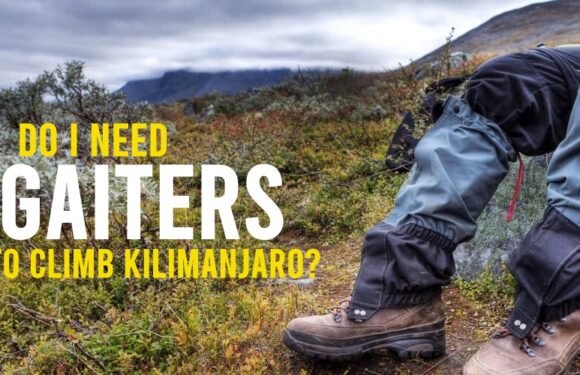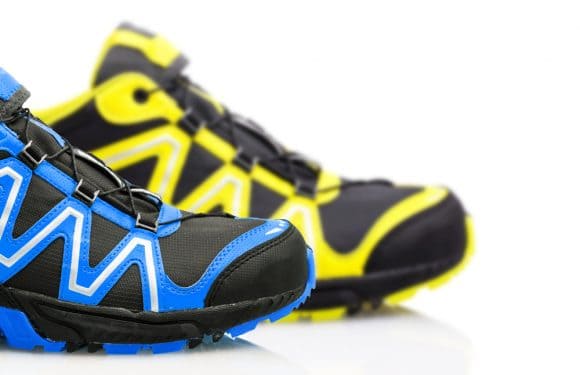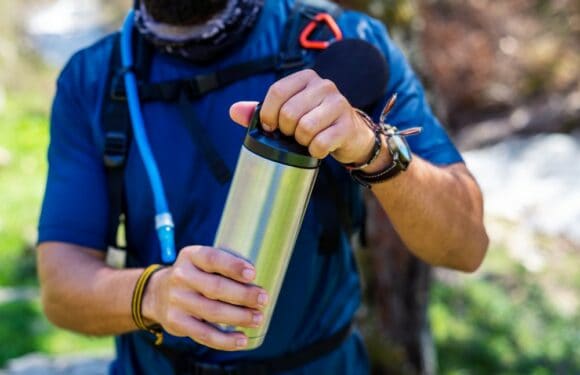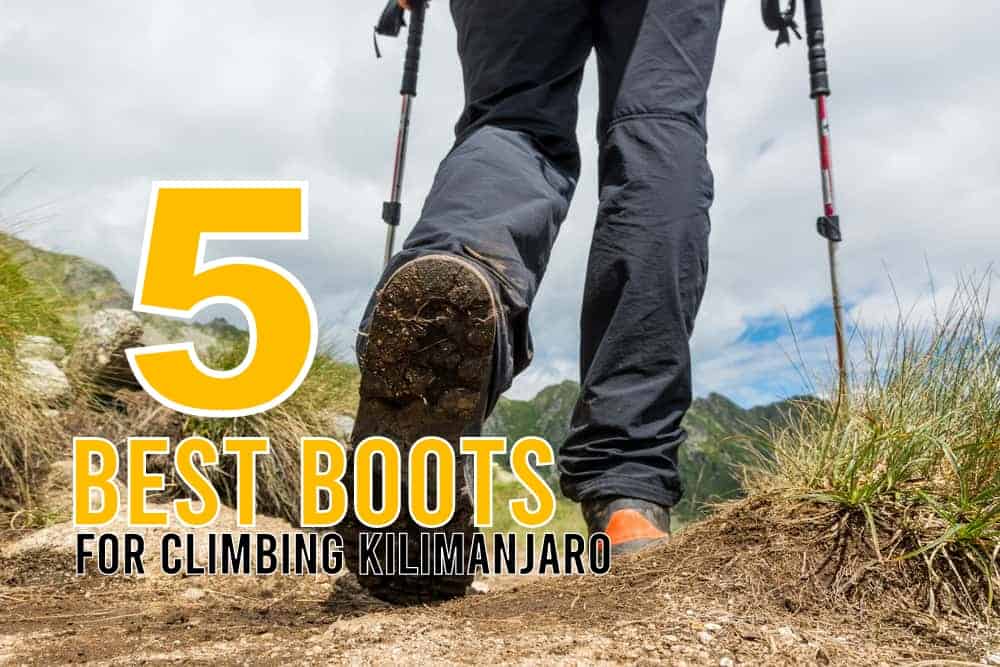
What are the Best Boots for Climbing Kilimanjaro?
Having the right footwear is very important. Because you are spending many hours each day hiking in your boots, if they don’t fit right or work as expected, they can be the source of foot problems. Bad boots can not only be a nuisance on Kilimanjaro, they can ruin your climb outright. So you definitely want to select a high quality product.
How to Choose a Hiking Boot for Kilimanjaro
Hiking boots aren’t just regular boots that you happen to wear when hiking, they are boots made especially for rugged hiking trails. Though you could climb Kilimanjaro with various different types of footwear including running shoes or hiking shoes, many clients choose to wear sturdy, high-cut, waterproof boots.
It used to be that hiking boots were very heavy. But today, advancements in shoe technology have replaced the old elements that used to provide stability in a boot. As a result, hiking boots are lighter, but still offer plenty of support.
Boot Fit
The most important factor in choosing a boot is the fit. Even the best quality boot can be the worst choice for a person if their foot shape and size does not match the shoe.

Here are the things to look for in a boot:
- Room for your toes – the foot should be held secure with wriggle room for the toes. The toes should not bump or touch the sides or the front tip of the shoe. Wiggle your toes and make sure they are not cramped. You need space for your toes, from ½ inch to one inch of space between your toes and the front of your shoe.
- Snug, but not tight – the boot should be comfortable, and fit securely around your ankle and instep. It should not pinch or constrict. The arch should be well supported and the sides of your foot should be snug as well.
- Flexible – the boot should have enough flexibility to enable the foot to move a bit inside, but not so much that the foot can slide back and forward.
- Sized correctly – The main mistake people make is buying boots or shoes that are too small. One study showed that one third of men are wearing shoes that do not properly fit them. The same study reported that half of women are wearing shoes that do not fit. If you’re unsure, get them professionally fitted at an outdoor shop.
The standard test for fit is to put the boot on, but don’t lace it up. Slide your toes to the front of the boot. You should now be able to fit your pointer finger comfortably behind the heel. If it’s too tight to get a finger in, try a half size up. If you can easily fit more than one finger in, then it’s too loose; try a half size down. Again, a good fitting hiking boot should be snug all over, but not tight.
Boot Material
Boots are typically made from two types of materials: leather or synthetic.
Leather boots are sourced from animal skin, usually cowhide. Synthetic boots, on the other hand, are made with plastic including nylon, polyester or a form of synthetic leather. Both types of material are appropriate for Mount Kilimanjaro.
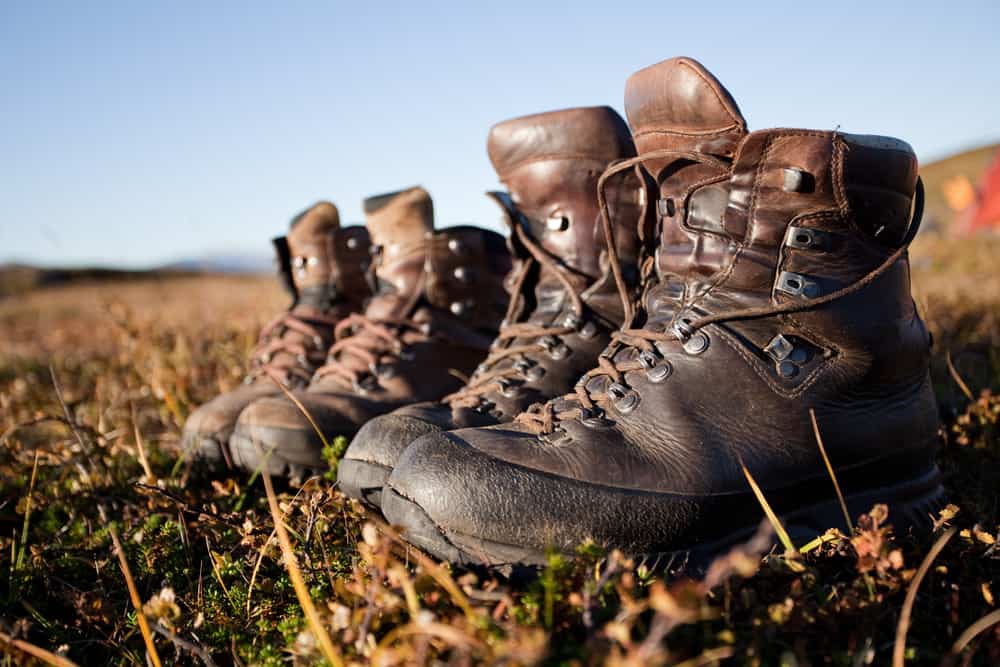
Leather walking boots have a stronger, sturdier feel to them. They provide greater protection from the elements than synthetic boots because of their tough, waterproof exterior. They are warmer (less breathable) than synthetics due to leather’s natural characteristics. Leather boots are more rigid and can take a lot longer to break in. Some believe they are less comfortable because of this. They also are generally heavier, more bulky, and more expensive.
Synthetic boots are made from softer materials that can be more flexible, and therefore support your natural foot movement more easily. They are often lightweight and more breathable, but still waterproof. They also don’t require a long break in time, if any at all, to feel comfortable. This out-of-the-box comfort also means they are typically less durable, and won’t last as long as leather boots. Synthetic boots are generally a lot cheaper to produce, so they are more affordable.
We recommend synthetic boots over leather simply because of the weight factor. Heavy boots, over a period of many days of hiking, can take its toll on your energy. So our best advice is to keep your footwear as light as possible.
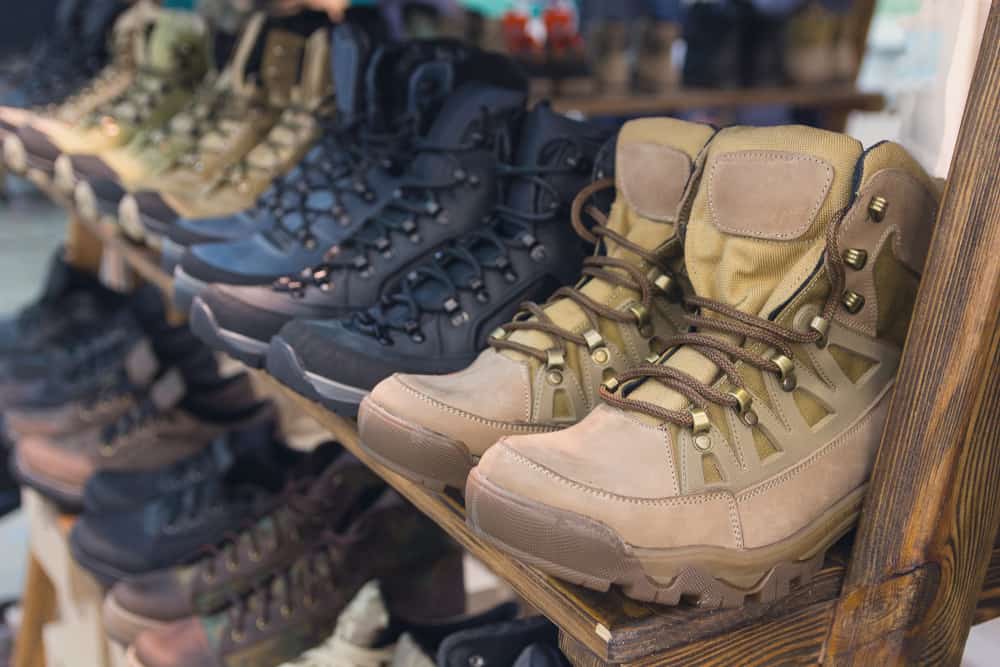
Breaking Boots In
Once you purchase a pair of boots, break them in slowly with shorter hikes. Leather boots in particular take a while to break in, so take a couple of short hikes or wear them around town before you take them on long day hikes. Many synthetic boots require no breaking in at all.
Be sure you wear the same socks you will wear on your climb. Find a combination of socks and shoes that work well and then don’t make any changes before your Kilimanjaro hike. Take care of your feet!
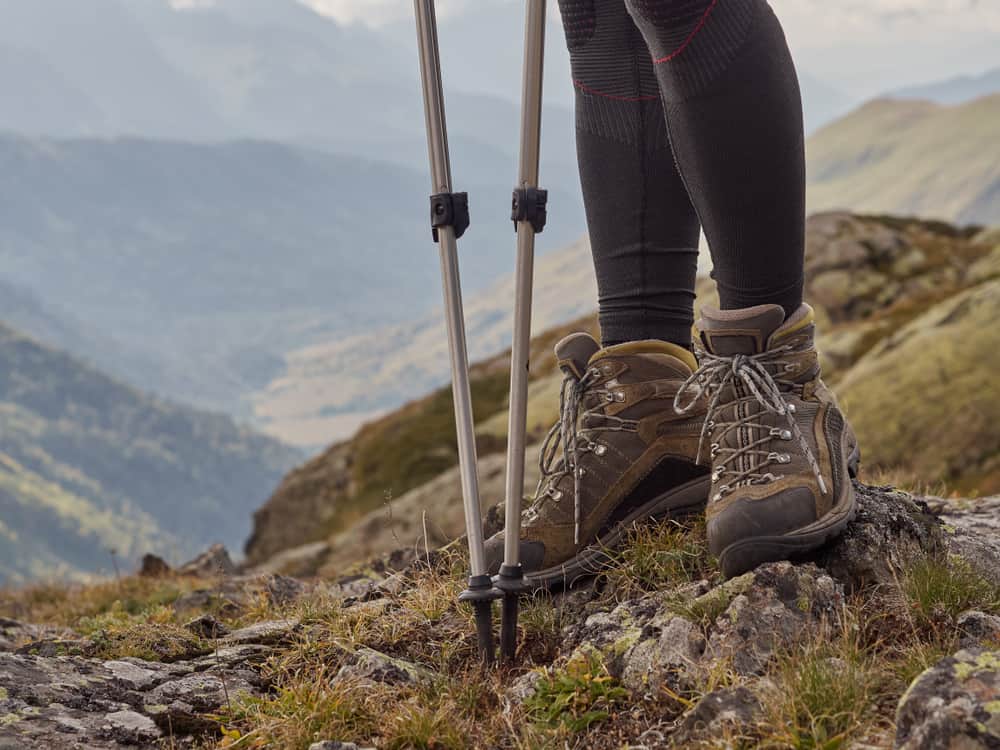
Which Boots Do You Recommend for Climbing Kilimanjaro?
We have five recommended hiking boots. Take a look at our top picks below and find your favorite.
Asolo TPS 520
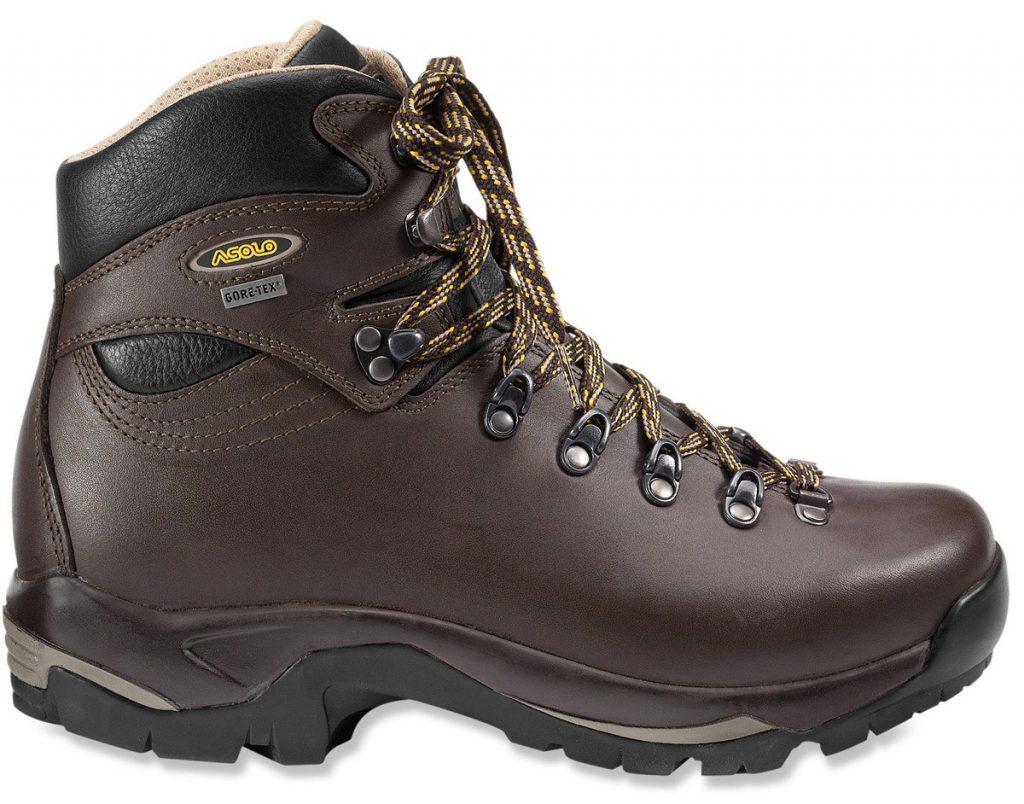
Boots used on Mount Kilimanjaro should be warm, waterproof and comfortable. And for these characteristics, we find that the Asolo TPS 520 Hiking Boot is a top performer.
These heavy duty boots are high cut, constructed of full grain leather, and have a breathable Gore-Tex membrane. Many rave about the comfort of these boots, right out of the box. However, always break in your boots before using them for extended periods of time.
Thes TPS 520 are the most durable, most protective, most supportive boot that you can find, short of a mountaineering boot. There are not many drawbacks to these boots, except for the hefty sticker price and weight.
These boots retail for about $330 and can be found here: Asolo TPS 520 Hiking Boots
Salomon Quest 4D 3 GTX
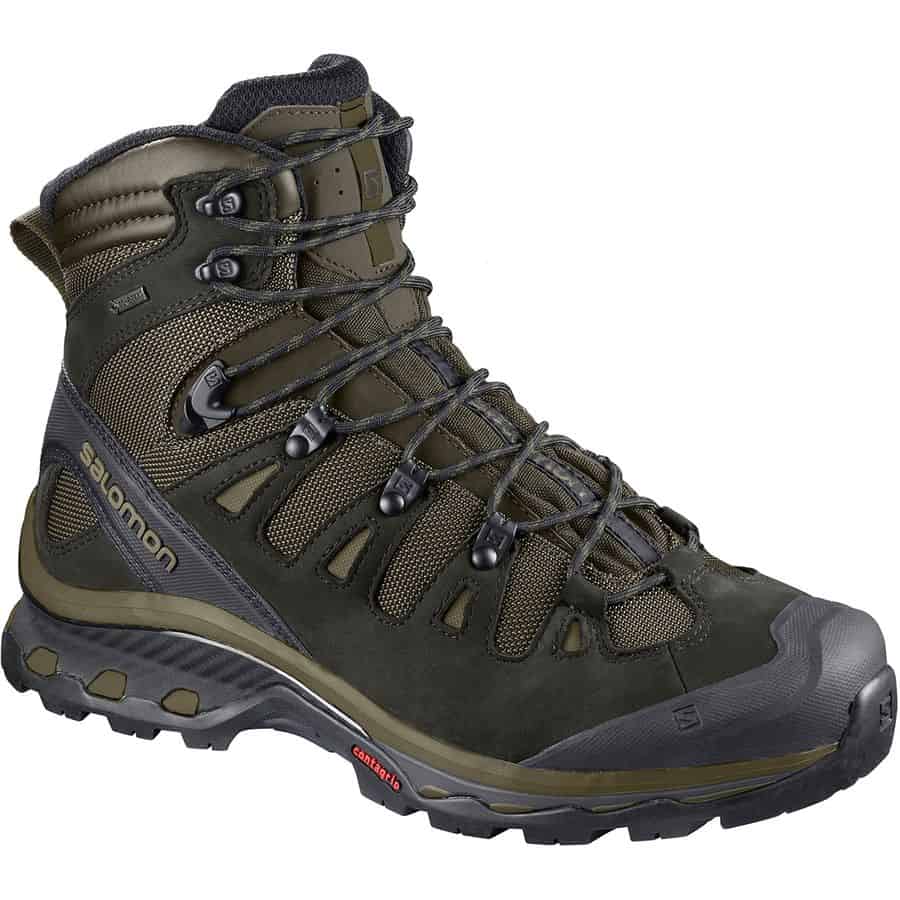
The Salomon Quest 4D 3 GTX is a comfortable boot with technologies that reduce fatigue over the duration of your climb. It is actually a light and cushioned shoe that has been adapted for backpacking. Made of nubuck leather, a breathable textile upper and a Gore-Tex membrane, this boots offers breathable, waterproof protection from the elements.
These boots retail for about $230 and can be found here: Salomon Quest 4D 3 GTX Boots
Asolo Fugitive GTX

Another boot, also from Asolo, that we really like are the Fugitive GTX. This boot is made of water resistant suede and a waterproof Gore-Tex membrane. It is more flexible and considerably lighter than the TPS 520 model. Reinforced rubber heels and toe boxes provide durable protection on the mountain.
These boots retail for around $250 and can be found here: Asolo Fugitive GTX Hiking Boots – Men’s.
Lowa Renegade GTX
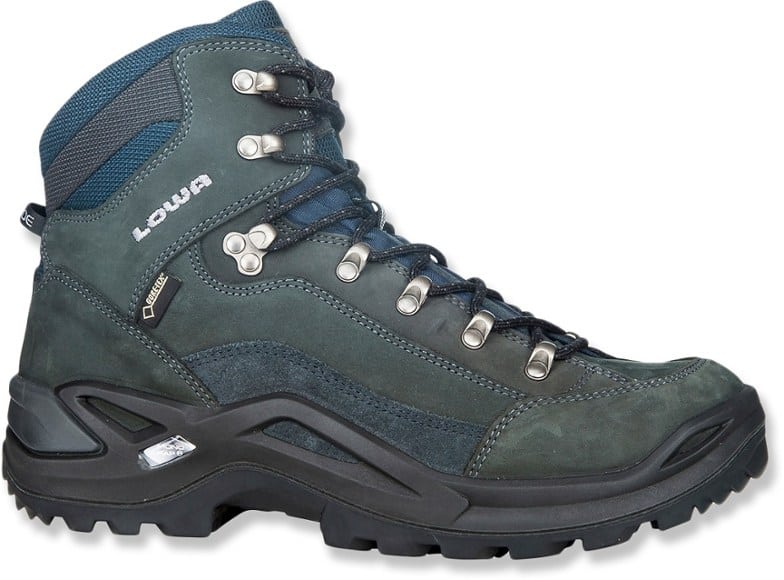
The Lowa Men’s Renegade GTX Mid Boot is a durable boot for climbing Kilimanjaro. The nubuck leather upper has a Gore-Tex waterproof and breathable membrane while a full-length nylon shank gives steady support for the entirety of the trek.
These boots retail for around $240 and can be found here: Lowa Renegade GTX Mid Hiking Boots
KEEN Targhee III
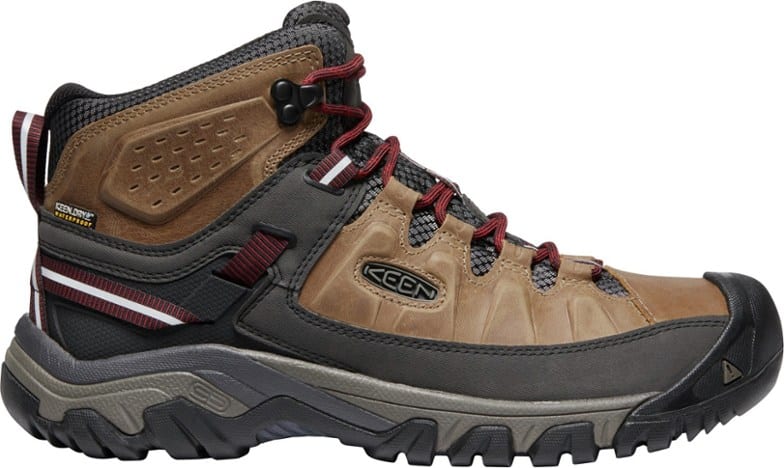
This mid-cut height hiking boot is built for comfort and performance. The waterproof membrane keeps your feet dry while letting them breathe. The aggressive outsole bites into the Kilimanjaro terrain with ease. You have these on your feet all day and night and they will still feel good. They are lightweight and will reduce the fatigue that sometimes occurs with heavier boots.
These boots retail for around $150 and can be found here: KEEN Targhee III
You can find all your outdoor gear at these preferred retailers:













































